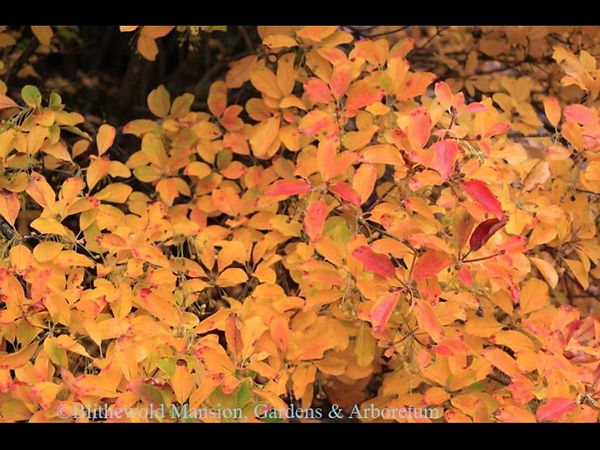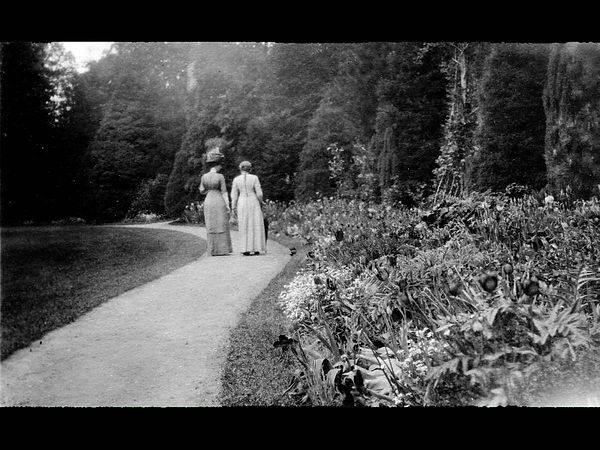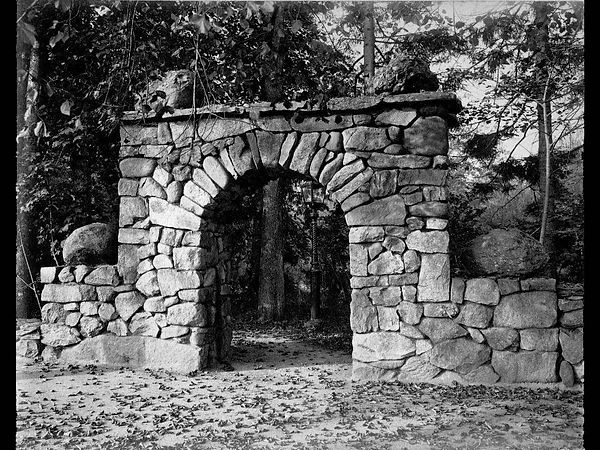Arboretum & Garden

Stop 5.1: Spring
Pause outside the Summerhouse to enjoy our collection of newly planted daffodils. Here you will find the daffodils ‘Fragrant Rose’, ‘Rainbow of Colors’, ‘Kedron’, and one of the latest-blooming, fragrant white daffodil ‘Thalia’.

Stop 5.2: Summer
More information coming soon.

Stop 5.3: Fall
More information coming soon.

Stop 5.4: Winter
More information coming soon.

Stop 5.5: History: Enclosed Garden
When Augustus and Bessie bought the property in 1894, Blithewold consisted of 70 acres extending west from Ferry Road to Narragansett Bay. The northern part of the grounds, the location of present-day Blithewold, had the same basic spatial organization that remains today, but with formal gardens near the present location of the Enclosed Garden.
The previous owners of the property, the Gardners, had begun maintaining a garden in this area since the mid-1800s. John DeWolf says,
“Mr. Gardner was a man of horticultural tastes and a great lover of English ways of living ... and Blithewold during his ownership was a good imitation of an English estate. There was no especial attempt at landscape design but the whole place was scrupulously neat and always in order.”
Bessie and DeWolf redesigned the interior of the existing garden, while keeping and adding to the evergreen “walls”.
DeWolf said,
“It is presumed that the present garden will be entirely devoted to ornamental purposes. ... The centre is left open, and a view can be had across the grass at any place of the flower beds, and brilliant colors opposite with their background of trees. ... Where the trees throw their shadows I would plant ferns, foxgloves, lily of the valley and other shade loving plants, while in the sunshine, masses of iris, peonies, lilies, larkspur, hardy roses, and all the varieties of hardy perennials that when once established make the most splendid display of any class of flowers, increasing in beauty each year. ...
The grass should be low in the center, where it can be level for croquet and other games but to get the prettiest effect it should rise gently on all sides.”
For some decades, this garden flourished. But by the late 1930s, the flowerbeds and roses had become overgrown by shade-loving evergreen groundcovers. To reduce costs and maintenance, the gravel paths were left to disappear. However, by using our archival records and verified preservation techniques, today we have restored almost all of Blithewold’s original gravel paths, refreshed the flowerbeds, and controlled the groundcover.

Stop 5.6: Giant Sequoia
Giant Sequoias are native to California’s Sierra Nevada Mountains, growing to an average of 200-300 feet. They are the world’s largest trees.
But wait! - you may ask, “What about the giant Redwood trees on the West Coast? Aren’t those the biggest?” Coastal Redwood trees are the world’s TALLEST trees while the Giant Sequoias have the most volume, which takes both height and diameter into account, making them the LARGEST. It's a subtle distinction!
John DeWolf grew this particular tree from a tiny seedling. When it grew too large for his greenhouse in Prospect Park, Brooklyn, he transplanted it here. Now almost 100 feet tall, this tree is a Rhode Island Champion. Marjorie propagated more than a dozen trees from this Giant Sequoia, planting most of them on different parts of Blithewold's grounds.

Stop 5.7: Side Gate
As you walk around from the Enclosed Garden towards the Greenhouses, you’ll notice a small gate in the rock wall along Ferry Road. Each year, right around Mother's Day thousands of fragrant lilies of the valley fill the area around this stone gate.

Stop 5.8: North Cottage
As you walk around from the Enclosed Garden towards the Greenhouses, you’ll notice a small cottage ahead and to your right.
This is the North Cottage which was built around 1850 by the Gardners. It may have been used to house the year-round staff that managed the grounds. The floor plan is simple, with two rooms parallel to the road, and a cross gable creating a third room to the rear. It may be the oldest building on the property.
When the Van Wickles bought the property, their head gardener John Best moved into North Cottage with his family. Best lived here from 1898 until his retirement in 1928, helping to create and maintain the gardens designed by DeWolf.